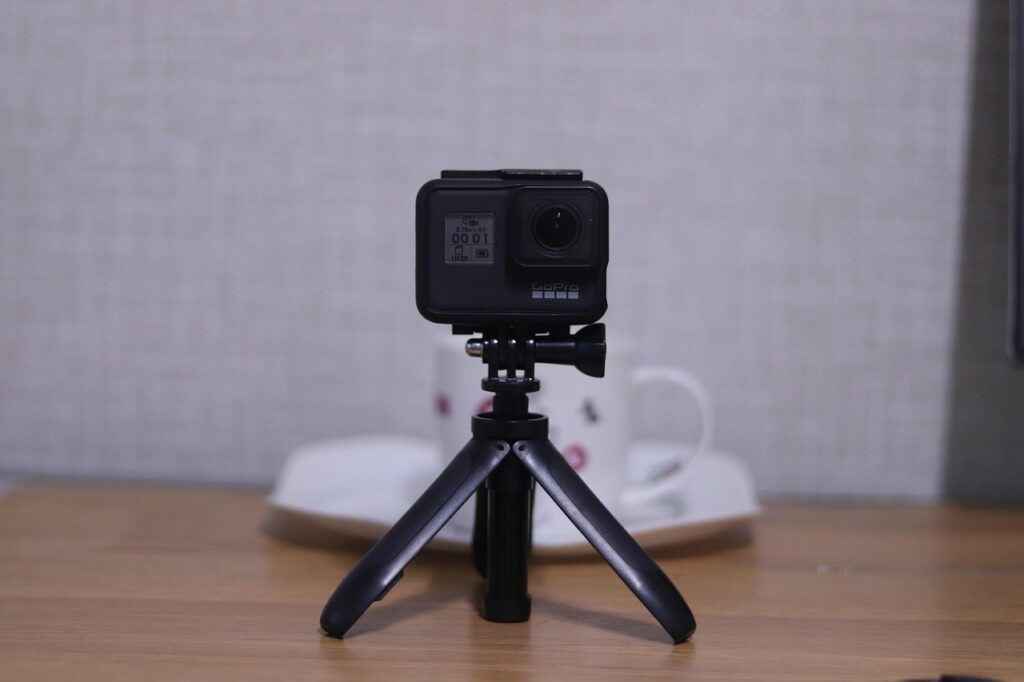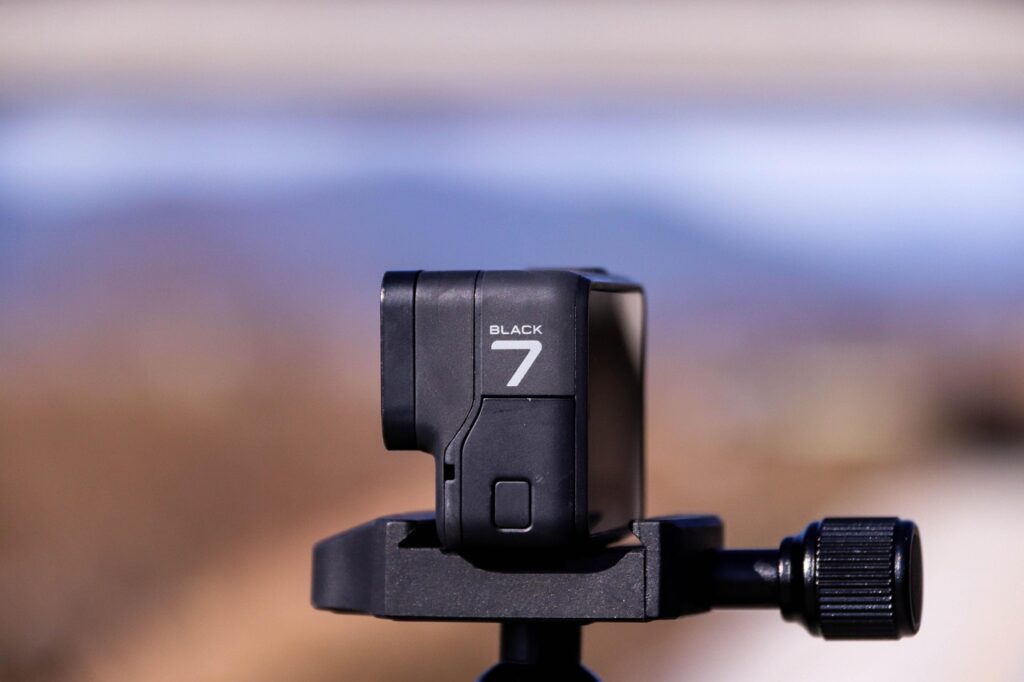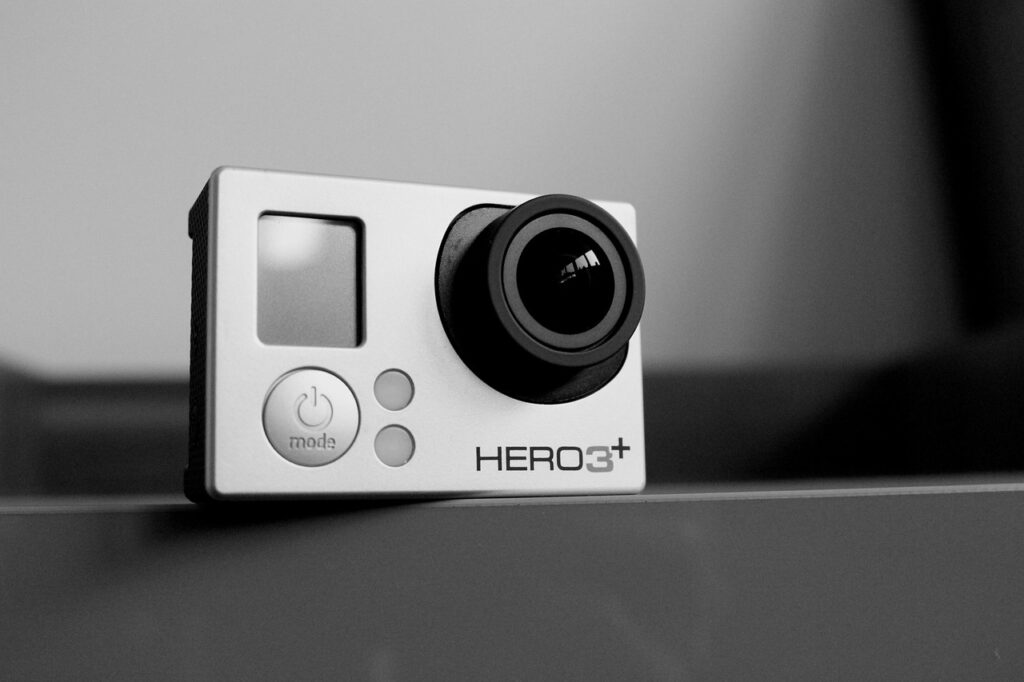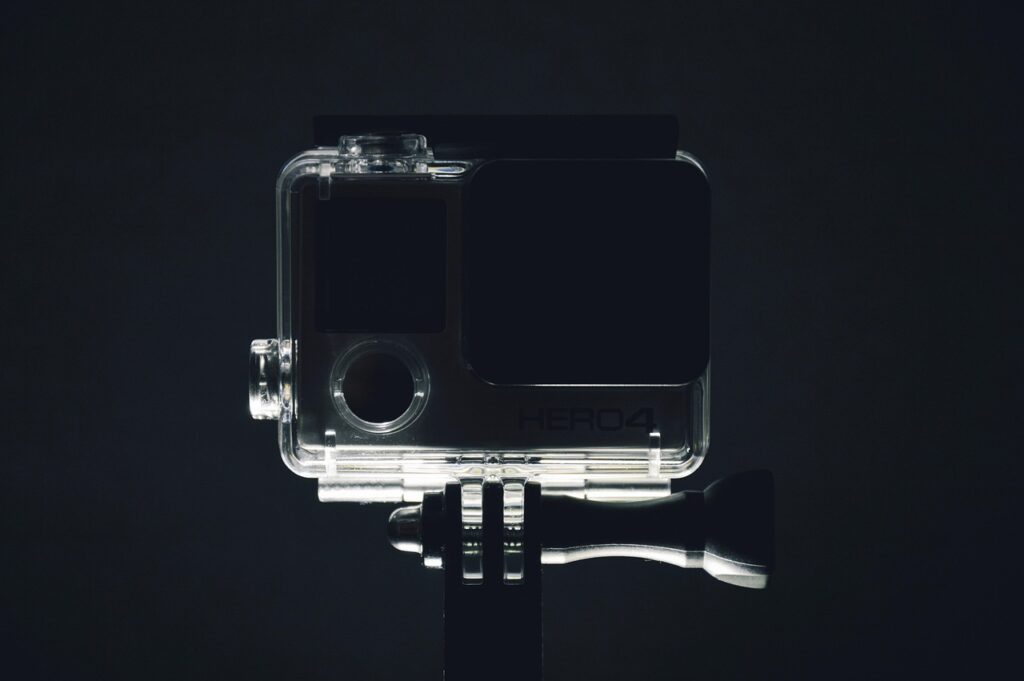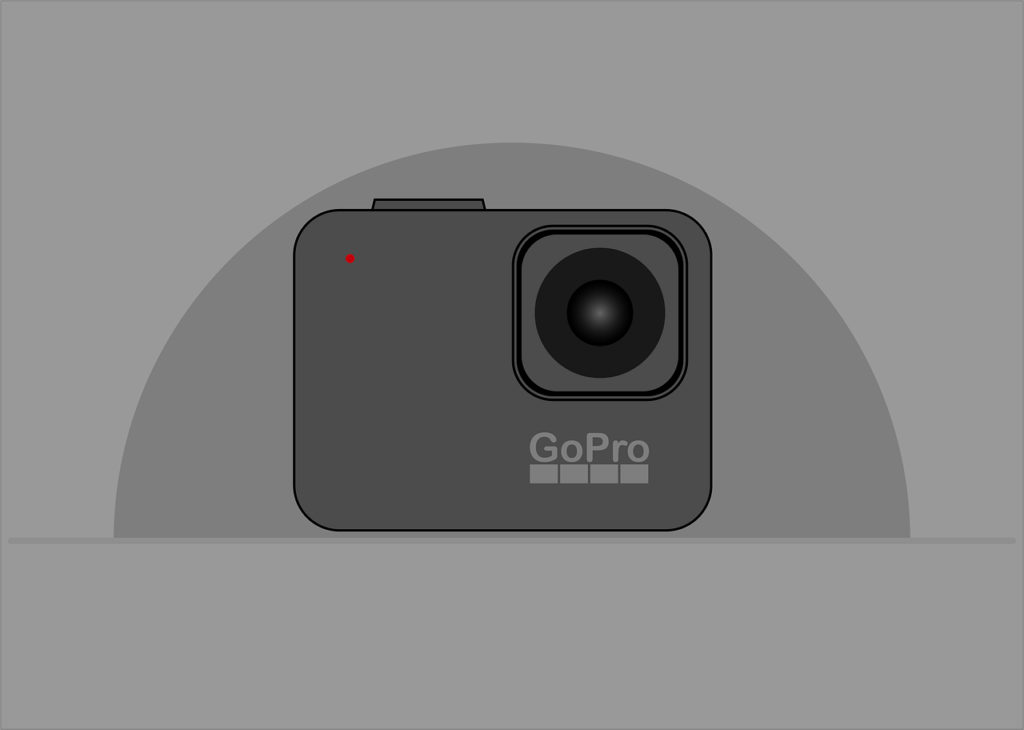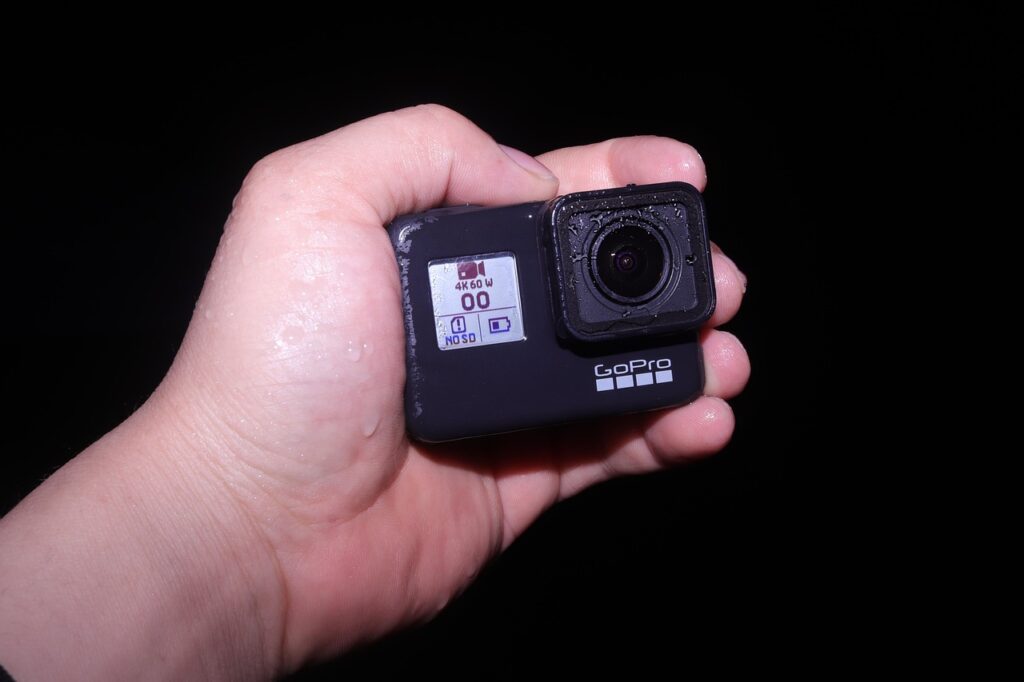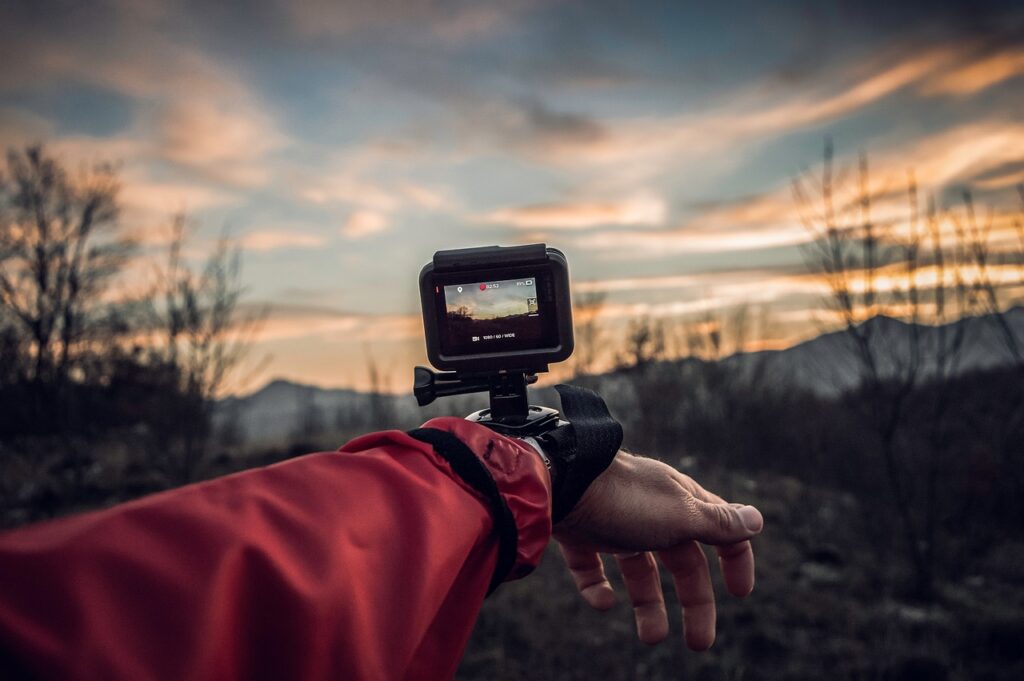
Action cameras promise a world of adventure, capturing your most exhilarating moments in stunning detail. They are designed to be rugged companions, ready for anything from mountain biking and surfing to drone flights and extreme sports. The allure is undeniable: pocket-sized devices that can record breathtaking footage where traditional cameras fear to tread. But for all their promise, these compact powerhouses can sometimes turn into veritable money pits, not just from initial purchase costs, but from the hidden issues that can render your hard-won footage unusable.
It’s a common scenario: you’ve spent hundreds, perhaps thousands, on your action cam, and after countless hours of shooting, you’re left sifting through a gazillion hours of video. While some clips might be genuinely spectacular, a significant portion often ends up on the digital cutting room floor due to pervasive problems. These aren’t always about the camera physically breaking, but rather about the frustrating visual distortions, color inaccuracies, and jarring movements that undermine the very purpose of an action camera – capturing clear, compelling action.
We’re here to pull back the curtain on the top issues that plague action camera videos, explaining what they look like, what causes them, and crucially, how many of them can be tamed or fixed in post-production. Understanding these common pitfalls is the first step in ensuring your investment doesn’t just record video, but captures genuinely professional-quality footage worthy of sharing. So, buckle up, because we’re diving deep into the challenges that can turn your action cam dreams into a visual nightmare.
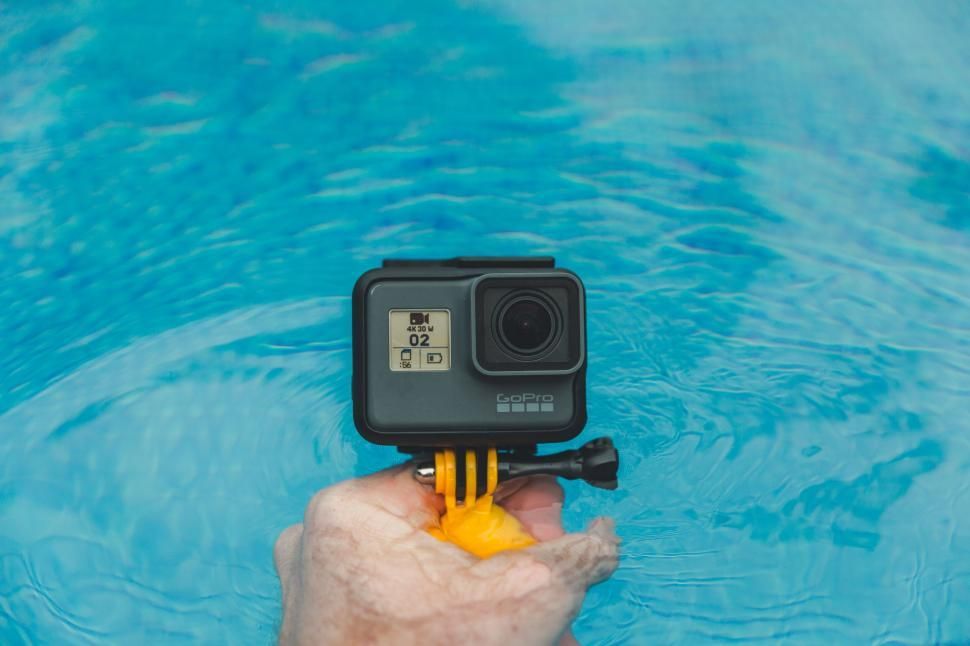
1. **The World in a Fisheye**One of the most instantly recognizable, and often frustrating, problems encountered with action camera footage is the infamous “fisheye” or “barrel” distortion. This unique visual effect is a direct consequence of the ultra-wide-angle lenses commonly employed in many action cams. While these lenses are invaluable for capturing a broad field of view, particularly when the camera isn’t perfectly aligned with the intended direction of travel, the trade-off is often a distinctly curved, almost globular appearance to the edges of your video frames. Straight lines bend, horizons arc, and the entire scene can look, as the experts put it, “pretty weird” – as if it’s been shot “from inside a fishbowl.”
The advantage of such a wide-angle lens for action video cannot be overstated when it comes to capturing the moment. Whether your camera is mounted on a bike, a skateboard, or even a hang glider where the vehicle’s orientation might shift unexpectedly, the expansive field of view ensures that the crucial forward action remains within the frame. This broad perspective is essential for ensuring you don’t miss any of the fast-paced activity, giving you a greater chance to catch that epic jump or breathtaking maneuver. However, this functional benefit often comes at the cost of visual naturalness, as the world appears warped and distorted.
Fortunately, for those who find the fisheye effect detracting from their footage, there’s a powerful solution available post-shooting. The most effective way to correct this pervasive problem is by utilizing specialized software that is equipped with knowledge of the specific camera and lens parameters used to capture the video. This allows the software to precisely reverse the distortion, straightening out those curved lines and creating a much more natural, “easier on the eye” image. It’s a transformative process that highlights how much better corrected video can truly be, far surpassing the often “rarely satisfactory” results of generic fisheye correction tools.
Read more about: Red Cars Reign: Unpacking the Psychological and Market Forces Behind America’s Favorite Automotive Hue
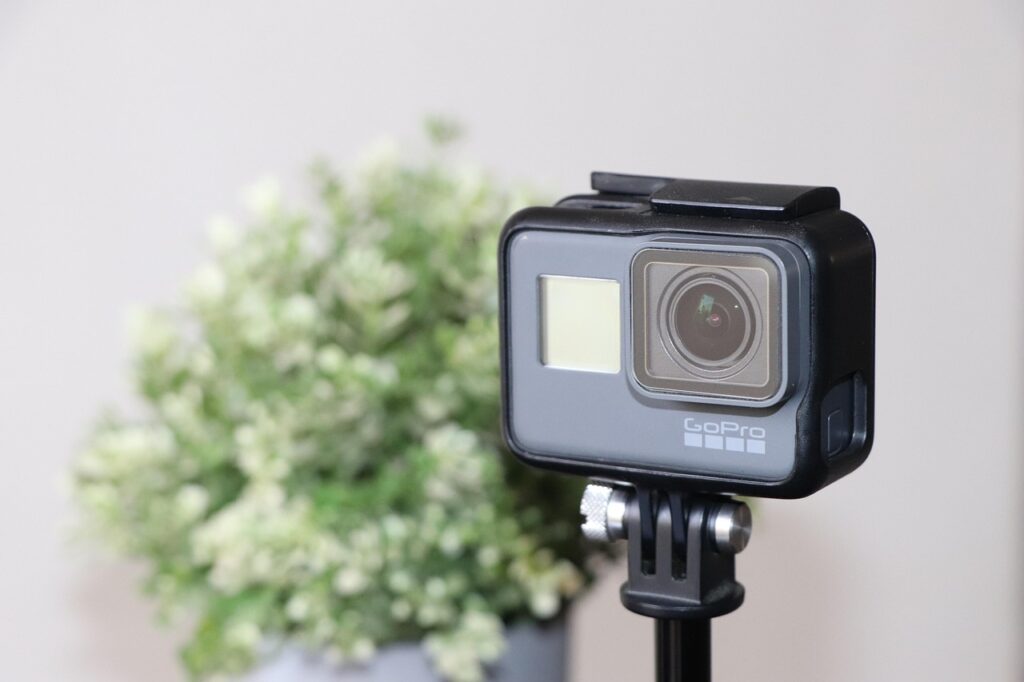
2. **Those Colors Look, Well, Wrong**Action cameras are often put through their paces in incredibly dynamic environments, where lighting conditions can shift dramatically and unpredictably. Imagine flying through a forest canopy, where you’re constantly moving from bright sunlight to deep shadow, or navigating a coastal trail as the sun dips in and out of view behind passing clouds. Under these challenging circumstances, even the most sophisticated video gear struggles to maintain natural and consistent colors. This is why your meticulously planned videos often come out looking washed out, overly dark, or exhibiting an unnatural color cast, such as being too yellow or too blue. These color shifts can drastically diminish the professional look and feel of your footage.
What makes this particular problem even more vexing is that these defects rarely appear in isolation. It’s not uncommon to find a single 30-second clip afflicted with a combination of issues: it might be both washed out and too yellow, or too dark with an inexplicable blue tint. This multitude of color and contrast problems can quickly overwhelm the viewer, pulling them out of the immersive experience you intended to create. The inconsistent color grading makes the footage feel amateurish and distracts from the action itself, diminishing the impact of your thrilling endeavors.
The good news is that these pervasive color and contrast issues are highly treatable in the post-production phase. Modern video editing software offers advanced capabilities to rectify these problems after the video has been shot. By employing sophisticated algorithms, software can intelligently track color shifts across different frames, enabling it to correct “unwanted changes” and ensure a much more consistent look over longer periods of footage. This process helps to produce “more natural colors” and, crucially, can “bring out details that would otherwise be hidden in shadows or washed out,” transforming your raw footage into far more professional-looking content. It’s the kind of repair that makes you feel ready to accept an award for your stunning visuals.
Read more about: Elevate Your Look: 14 Critical Style Mistakes Men Over 50 Should Immediately Correct
3. **Shake (Rattle, and Roll)**While the rhythm of “Shake, rattle, and roll” might be a classic in music, it spells disaster for action videos. When an action camera is subjected to intense vibrations, the resulting footage can appear blurry, fuzzy, and fundamentally unstable. Consider the visual chaos from an action cam mounted on a remotely piloted aircraft, where the vibration of the aircraft’s frame due to unbalanced propellers or buffeting by wind translates directly into a wobbly, unclear image, particularly noticeable in foreground elements. Similar problems plague footage from action cams mounted on bikes or cars tearing over rough terrain, where every jolt and bump creates a jarring, unwatchable mess. This lack of stability robs your footage of its clarity and impact, rendering exciting moments into a disorienting visual soup.
Many action cameras attempt to mitigate these issues with built-in stabilization features, striving to correct for vibrations and shakes on the fly. However, the processing power available within a compact action camera often limits the effectiveness of these real-time corrections. The results, while sometimes offering a minor improvement, are typically described as “barely adequate.” They might reduce some of the most egregious wobbles, but they often fail to achieve the smooth, fluid motion that truly elevates action footage to a professional standard. This leaves many users frustrated, feeling that their camera’s internal solutions aren’t living up to expectations.
This is where the power of post-processing truly shines, making a “huge difference” in the quality of your video. Modern computer software can apply “far more complex algorithms” to detect and remove artifacts caused by vibration, a level of sophistication that simply isn’t feasible for an action cam’s on-board processor during real-time capture. This advanced post-shooting processing can perform a remarkable transformation, elevating a “blurry mess into first-class footage.” It allows for a level of correction that ensures your dynamic moments are captured with the clarity and stability they deserve, turning previously unusable clips into compelling cinematic sequences.
4. **Angling for a Better View**The very nature of action camera usage often means that cameras are mounted in unconventional positions, or are subject to the unpredictable movements of their environment. This can lead to footage that subtly, or not so subtly, tilts away from the horizontal, veering left and right, sometimes with rapid and disorienting succession. This continuous or intermittent angling can make otherwise compelling video sequences utterly “unwatchable unless you’re a fan of motion sickness.” A viewer trying to follow the action will constantly feel ofilter, diminishing their engagement and enjoyment of your painstakingly captured content.
Historically, the traditional approach to combating camera tilt involved utilizing hardware devices known as video stabilizers. These elaborate mechanical or electronic gimbals are designed to isolate the camera from jarring movements and maintain a level horizon. However, these solutions introduce a new set of challenges for the action cam enthusiast. Firstly, stabilizers are often “fairly large,” making them impractical or “unusable on, for example, a dirt bike” or other compact setups where space and weight are at a premium. Secondly, they are typically “very expensive,” representing another significant investment on top of the camera itself, further contributing to the “money pit” dilemma for budget-conscious adventurers.
Once again, software comes to the rescue, offering a powerful and often more practical alternative for correcting skewed footage. Processing your footage after shooting allows you to precisely fix “variably tilted video.” Advanced editing software can analyze each frame, detect the angle of tilt, and then digitally rotate the image to maintain a perfectly horizontal line, or indeed, any preferred fixed angle you desire. The result is video that appears as if the camera was “always horizontal,” delivering a smooth, level perspective that significantly enhances watchability and professional appeal, without the bulk or expense of hardware stabilizers.
Read more about: 20 Shag Haircuts to Level Up Your Layered Look
5. **It’s Just Like Jelly!**Action video places immense demands on cameras, requiring them to be compact, capable of high-resolution recording, offer robust battery life, and exhibit strong resistance to dust and water. Among the most challenging environments for action cams is the air, a domain that has exploded with the advent of drone technology. Drones allow cameras to be lofted hundreds of feet into the sky, undertaking tasks from shooting dynamic advertisements to inspecting critical infrastructure like wind turbines and pipelines. However, this aerial frontier introduces a unique and particularly vexing video artifact known universally as “Jello.”
“Jello” is a descriptive term for a specific type of video distortion caused by the rhythmic vibrations emanating from unbalanced propellers on a drone. Instead of a smooth, stable image, the footage takes on a continuous, wave-like “wobble” that makes the entire picture look exactly how its name sounds – as if the scene is undulating like a bowl of jelly. This effect is not only visually distracting but can also make crucial details within the footage appear distorted or blurry, severely compromising the quality and utility of the aerial capture. It’s a clear instance where the hardware’s operational characteristics directly impact the visual integrity of the output.
The challenge of “Jello” highlights the inherent limitations of real-time processing in action cameras. Removing this rhythmic wobble effectively requires complex computational analysis that is typically beyond the processing capabilities of a small, power-efficient action camera while it’s actively recording. Consequently, in-camera attempts to mitigate “Jello” are often insufficient. However, just like many other video ailments, “Jello” is “very easily done in software afterwards.” Post-production tools are equipped with sophisticated algorithms capable of identifying and correcting these specific vibration patterns, effectively smoothing out the continuous wobble and restoring stability to your aerial masterpieces. This post-processing capability is a game-changer, transforming shaky, jelly-like footage into professional, steady aerial views.”
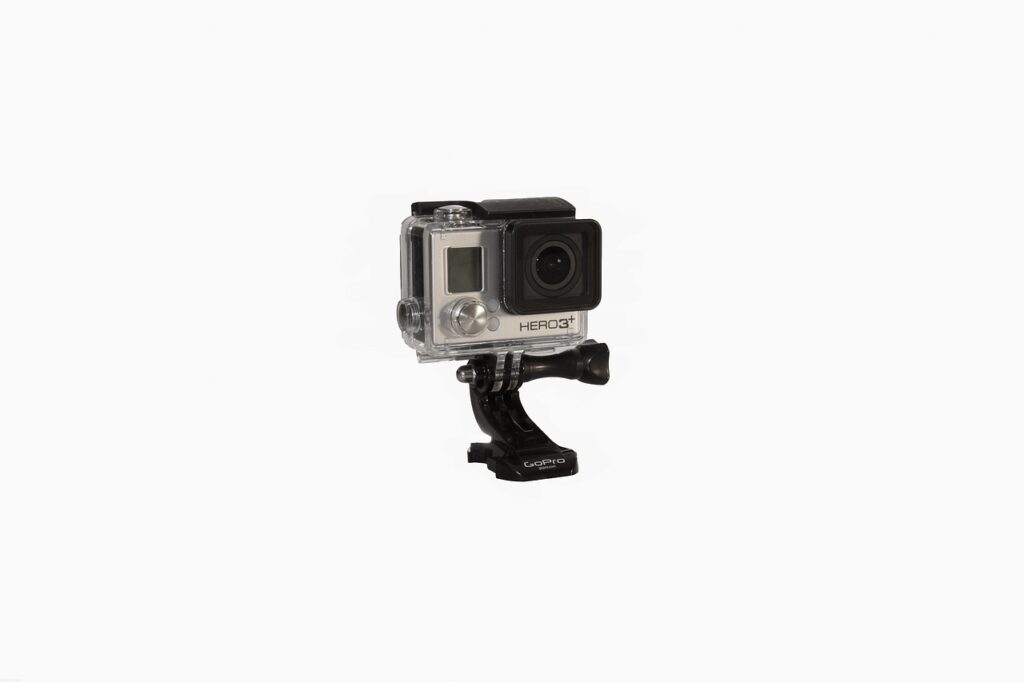
6. **Too Much Noise**Action cameras cram an incredible amount of advanced technology into their tiny, rugged packages. But there’s a limit to what compact electronics can achieve without breaking the bank for broadcast-quality gear. Even with the most expensive setups, you can still encounter ‘noise’ in your video, which appears as a frame-wide random distortion of individual pixel colors, making your carefully captured scenes look gritty or muddled.
This pixel-level interference can significantly detract from the clarity and professional appearance of your footage. Imagine trying to showcase a breathtaking landscape or an intense sports moment, only for it to be obscured by a digital grain. It compromises the visual integrity, turning what should be a crisp, clean shot into something far less impressive.
Thankfully, this common video imperfection is another battle that can be won in post-production. Modern editing software employs sophisticated algorithms that track color changes and pixel patterns throughout your scenes, allowing it to intelligently identify and remove the majority of noise from a video clip. The transformation after de-noise processing is often nothing short of dramatic, rescuing ugly, noisy video and turning it into genuinely professional-quality footage that you’ll be proud to share.
Read more about: Before You Buy: The 14 Essential Checks Your Mechanic Insists You Make on Any Used Convertible
7. **Rollin’ (Shutter) Along**Ever noticed how seemingly solid objects like lampposts, fences, or buildings in your action videos sometimes appear to lean sideways, bend, or look strangely skewed? This visual anomaly isn’t a trick of the light or a consequence of your mounting angle; it’s a tell-tale sign of ‘rolling shutter’ distortion. It’s a fundamental issue tied to how your camera’s sensor captures an image, particularly in fast-moving scenarios.
Unlike traditional global shutters that capture the entire frame instantaneously, most action camera sensors use a rolling shutter, reading out pixel data sequentially, row by row. If the image in front of the lens is changing rapidly while this readout process is relatively slow, the final image can end up looking squashed or skewed. The exact nature of the distortion depends on the directions of both the camera’s movement and the objects within the scene, as well as the sensor’s readout direction.
Cheaper action cameras are notoriously more prone to this problem due to less advanced sensor technology and slower readout speeds. Before you entrust your camera to capture those truly once-in-a-lifetime moments, it’s definitely worth performing a few test shots in high-speed scenarios to gauge its rolling shutter performance. The good news is that even if your video does suffer from this distortion, sophisticated software algorithms can significantly reduce its effect, often to the point where it becomes virtually unnoticeable, restoring the natural look of your subjects.
8. **That Was Cool But Way Too Fast!**Action sports videos are all about speed, adrenaline, and incredible feats. A mind-blowing triple somersault with a half twist might happen in a literal blink of an eye. While the raw speed is exhilarating, sometimes you need to slow down the action to truly appreciate the intricate details and impact of such amazing moments. This is where slow-motion footage comes into its own, allowing viewers to savor every frame.
However, if your action camera doesn’t record at a sufficiently high frame rate (think 120fps, 240fps, or even higher), attempting to slow down the action in post-production will often result in jerky, staccato footage. This happens because editing software has to create new frames between the existing ones. Most basic software isn’t ‘smart’ enough to do this intelligently, leading to awkward jumps and a visually jarring experience that undermines the very impact you’re trying to achieve.
To achieve that buttery-smooth, cinematic slow motion, you need to seek out video editing software equipped with advanced interpolation techniques. Specifically, look for capabilities like Motion Flow, Optical Flow, and Dynamic Frame Blending. These cutting-edge techniques intelligently analyze the movement between existing frames, predict intermediate positions, and generate new frames that seamlessly blend into the sequence. The result? Slow-motion sequences that are as smooth and fluid as if you’d shot them on a camera costing ten times the price, allowing your audience to fully grasp the majesty of the action.
Read more about: How Many of These 14 Must-Watch, Genre-Defining TV Shows Have You *Actually* Seen?
9. **But What Video Format Do I Need?!**After you’ve successfully navigated the treacherous waters of fisheye, jello, shaky footage, and color correction, you might think the hardest part is over. Think again. One of the more subtly frustrating — and often overlooked — problems of working with video today is the sheer proliferation of formats. You’ve recorded your masterpiece, now you need to share it, but suddenly you’re faced with a dizzying array of file types: MP4, MOV, AVI, WMV, MKV, and many more, each with its own quirks and compatibilities.
Trying to play your video on devices as diverse as Windows PCs, Macs, Apple TVs, various web browsers, or even specific smart devices can quickly become a compatibility nightmare. What works flawlessly on your desktop might refuse to play on your tablet, or perhaps a client needs a specific format for their professional editor. This isn’t just an inconvenience; it can be a significant roadblock, forcing you into time-consuming conversions or, worse, requiring specialized (and often expensive) software to make your footage universally accessible.
This format labyrinth can turn your post-production workflow into a money pit in disguise, as you might invest in conversion tools, or spend countless hours troubleshooting playback issues. Understanding which formats are best for your intended platforms and having robust software that can both export and convert to a wide range of popular codecs and containers is absolutely essential. It empowers you to deliver your dynamic content seamlessly, ensuring your audience can enjoy your hard work without any technical hiccups, ultimately saving you headaches and unexpected expenses down the line.
10. **The Ultimate Dealbreaker: Broken Weather Sealing**While software can work wonders to fix many visual distortions, there’s one critical factor that no amount of post-processing can rectify: a hardware failure due to compromised weather sealing. Action cameras are designed for the wild, for environments where rain, dust, sand, and grit are not just possibilities but probabilities. For wildlife photographers, extreme sports enthusiasts, or anyone venturing beyond a studio, robust weather sealing isn’t a luxury; it’s arguably more vital than megapixel count or autofocus speed.
It’s crucial to understand that ‘weather sealing’ is not the same as ‘waterproofing.’ None of these cameras are truly waterproof to the extent of surviving prolonged submersion underwater; rather, they are designed to withstand significant exposure to tough weather and environmental elements. The secret lies in intricate rubber gaskets and precise sealing materials strategically placed around the most vulnerable points: battery ports, card slots, hot shoes, buttons, dials, and lens mounts. For effective protection, the camera *must* be paired with an equally weather-sealed lens.
So, how do manufacturers stack up? Some brands stand out for their exceptional commitment to durability. In our extensive testing and direct communication with manufacturers, Pentax, Olympus, and Leica consistently ‘take the cake’ for their outstanding weather resistance and reliability. Olympus, for instance, offers models like the EM1X and EM1 Mk II, known for resisting insane environmental issues, with the OM-1 Mark II and OM5 even boasting an IP53 rating. This means they’re protected against dust ingress to a degree that it won’t interfere with operation, and can resist water spray from any angle up to 60° for at least five minutes, confidently handling typical rainfall.
Fujifilm also earns high praise, not just for its unique image quality but for the robust weather sealing in cameras like the XH1, XT3 (with 79 sealed points), XT2, and X-Pro2, which have survived hurricane-like rains when paired with sealed lenses. Even their medium format GFX 50R handled torrential downpours. Canon and Nikon follow closely, with Canon DSLR bodies and the EOS R showing impressive sealing, surviving snow and strong winds, and capable of working in tough conditions. Nikon’s D850 and D5 are also very well sealed, though their Z series mirrorless cameras, while performing well in real-world tests, appear slightly less sealed in diagrams compared to their DSLRs.
Panasonic’s S1 and S1R, their first foray into the L mount full-frame world, come with ‘tons of weather seals and lots of protection,’ especially around the battery port and buttons. Ricoh’s Pentax K1 and K1 Mark II are also noted for their sturdy construction, despite the company not providing sealing diagrams. However, Sony stands out as the only manufacturer that refused to provide diagrams for their cameras. While their cameras are generally described as ‘pretty well weather sealed,’ our tests have shown them to start breaking down sooner than competitors like Fujifilm, Canon, Olympus, and Nikon in rainy conditions, making them a brand to approach with more caution if weather sealing is your top priority.
In the adventurous world of action cameras, preventing problems is often far easier and cheaper than fixing them. While software is your best friend for salvaging footage from visual distortions, choosing a camera system with robust, transparent weather sealing is your first line of defense against the elements. It’s about making informed choices upfront, ensuring your gear can truly keep up with your wildest escapades, and transforming what could be a frustrating money pit into a reliable partner for capturing those epic, unmissable moments. So, arm yourself with knowledge, choose wisely, and let your action camera capture the world as you see it – clear, vibrant, and always ready for the next adventure.

